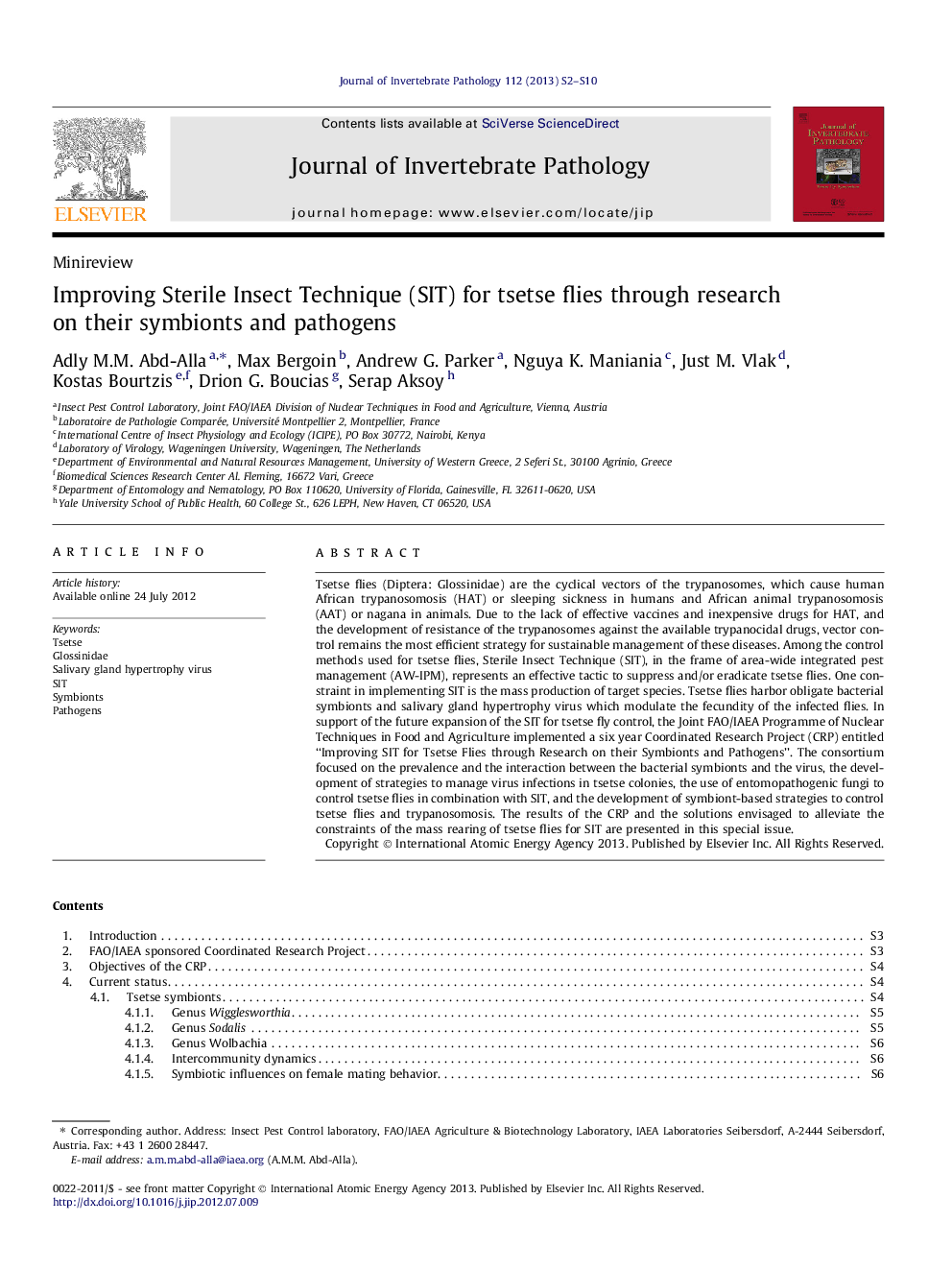| کد مقاله | کد نشریه | سال انتشار | مقاله انگلیسی | نسخه تمام متن |
|---|---|---|---|---|
| 6389600 | 1329894 | 2013 | 9 صفحه PDF | دانلود رایگان |

Tsetse flies (Diptera: Glossinidae) are the cyclical vectors of the trypanosomes, which cause human African trypanosomosis (HAT) or sleeping sickness in humans and African animal trypanosomosis (AAT) or nagana in animals. Due to the lack of effective vaccines and inexpensive drugs for HAT, and the development of resistance of the trypanosomes against the available trypanocidal drugs, vector control remains the most efficient strategy for sustainable management of these diseases. Among the control methods used for tsetse flies, Sterile Insect Technique (SIT), in the frame of area-wide integrated pest management (AW-IPM), represents an effective tactic to suppress and/or eradicate tsetse flies. One constraint in implementing SIT is the mass production of target species. Tsetse flies harbor obligate bacterial symbionts and salivary gland hypertrophy virus which modulate the fecundity of the infected flies. In support of the future expansion of the SIT for tsetse fly control, the Joint FAO/IAEA Programme of Nuclear Techniques in Food and Agriculture implemented a six year Coordinated Research Project (CRP) entitled “Improving SIT for Tsetse Flies through Research on their Symbionts and Pathogens”. The consortium focused on the prevalence and the interaction between the bacterial symbionts and the virus, the development of strategies to manage virus infections in tsetse colonies, the use of entomopathogenic fungi to control tsetse flies in combination with SIT, and the development of symbiont-based strategies to control tsetse flies and trypanosomosis. The results of the CRP and the solutions envisaged to alleviate the constraints of the mass rearing of tsetse flies for SIT are presented in this special issue.
Highlights⺠A Coordinated Research Project was supported by the FAO/IAEA from 2007 to 2012. ⺠The project comprised 23 scientists from 18 countries. ⺠This CRP focused on the impact of symbionts and pathogens on tsetse flies. ⺠The background events leading up to this CRP are outlined. ⺠Progress made on the CRP is detailed in this special JIP issue.
Journal: Journal of Invertebrate Pathology - Volume 112, Supplement 1, March 2013, Pages S2-S10